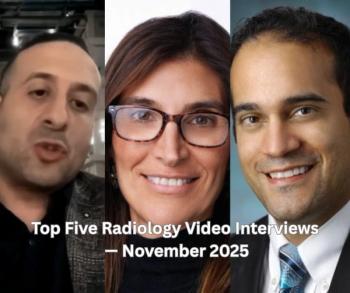
No Contrast MRI Procedure Differentiates Benign Breast Lesions from Malignancies
An MRI procedure that does not use contrast agents may reduce the number of unnecessary breast biopsies.
Diffusion kurtosis imaging, an MR imaging technique that does not require contrast agents, reduces the number of unnecessary breast biopsies, according to a study published in the journal Radiology.
Researchers from Germany sought to evaluate a radiomics model of BI-RADS 4 and 5 breast lesions extracted from breast-tissue-optimized kurtosis MR imaging for lesion characterization.
“Diffusion kurtosis imaging has been introduced in DWI to provide important information on tissue structures at a microscopic level,” lead author Sebastian Bickelhaupt, MD, from the German Cancer Research Center in Heidelberg, Germany, said in a release. “Since malignant lesions disrupt the tissue structures at this level, diffusion kurtosis might serve as a relevant marker of changes.”
A total of 222 women from two sites participated in the study.
The women had suspicious findings on mammography that were classified as BI-RADS 4 and 5 breast lesions. The women underwent DWI followed by biopsy. The researchers used a software algorithm developed for lesion characterization, and imaging features were extracted using a kurtosis-based radiomics model.
The results showed the radiomics analysis reduced false-positive findings by 70 percent, while detecting 60 of 61 malignant lesions (98 percent). The model significantly improved specificity compared with the median apparent diffusion coefficient and apparent kurtosis coefficient alone. Conventional
reading of dynamic contrast material–enhanced MR imaging provided sensitivity of 91.8 percent (56 of 61) and a specificity of 74.2 percent (49 of 66). Accounting for fat signal intensity during fitting significantly improved the area under the curve of the model.
“The model might help to lower the number of BI-RADS 4 lesions suspected of being cancer on the basis of screening mammography while retaining a high sensitivity similar to the sensitivity reported for biopsies themselves,” co-lead author Paul Jaeger, MSc, said in the same release.
According to Bickelhaupt, the new approach is not intended to replace current contrast-enhanced breast MRI protocols in general, but to expand the spectrum of options available for answering specific clinical questions.
Newsletter
Stay at the forefront of radiology with the Diagnostic Imaging newsletter, delivering the latest news, clinical insights, and imaging advancements for today’s radiologists.


























